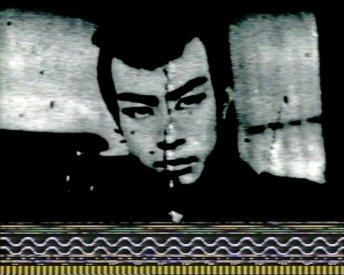The Esthetics of Disappearance (1986), 5:55 mins, Tokyo.
This work, which takes its title from Paul Virilio’s publication of the same name, explores notions of the cinematic in relation to recent global history, with particular focus on the role of the media in conveying information and events into the home via the medium of the television.
Virilio’s thesis upon cinema and temporal experience proposed that ‘with the cinematic accelerator... the measure of the world becomes that of the vector of movement, of the means of locomotion that de-synchronize time’. Notions of heightened speed and the distortion of perception are conveyed visually in the work by the rapidity of images and their intense colouration - elements that have come to represent key characteristics of Callas’ mature style.1
- 1. Rachel Kent from “Peter Callas: Initialising History, video works 1980-1999”





